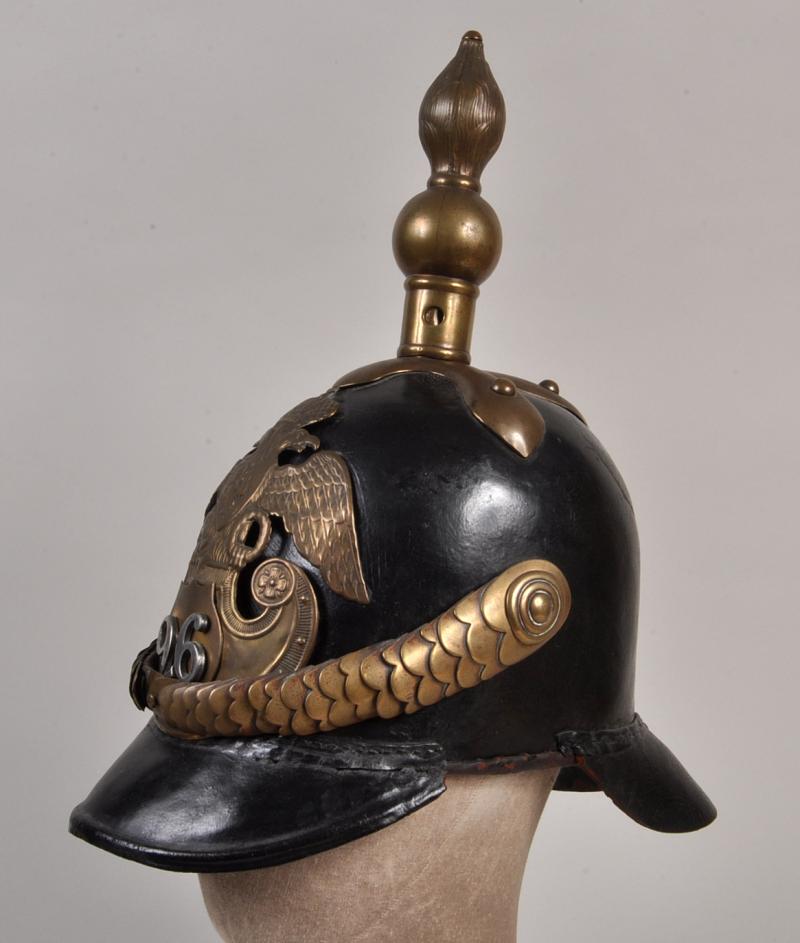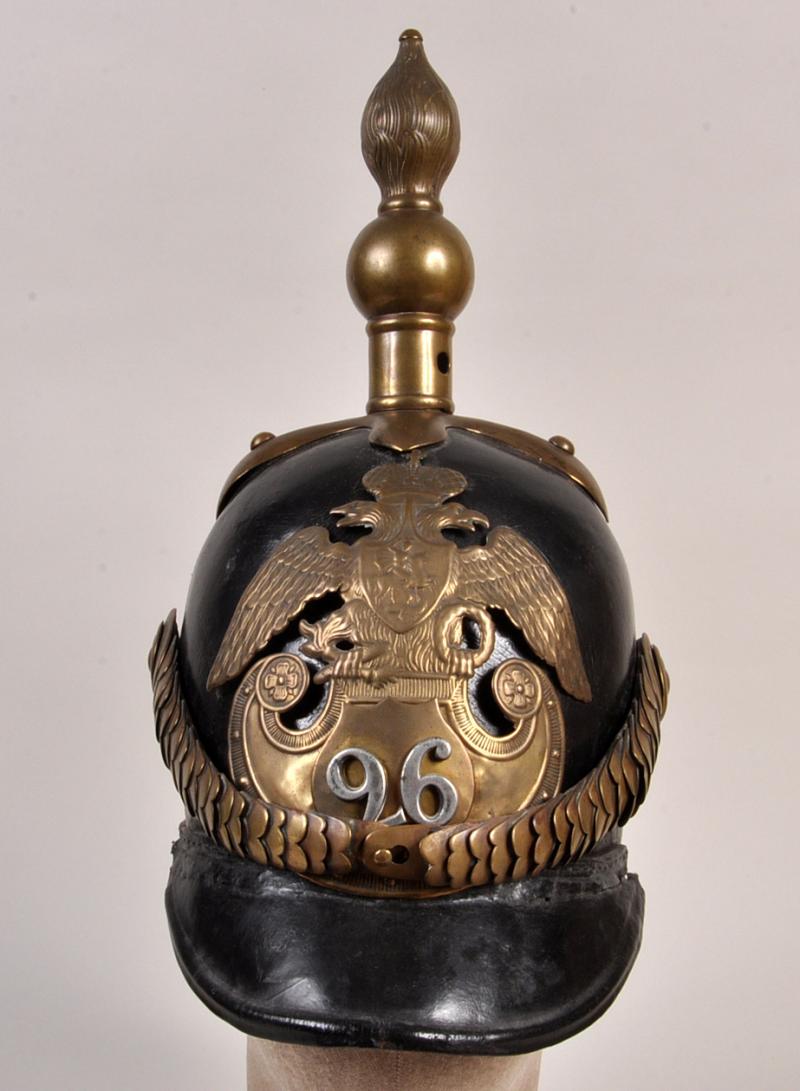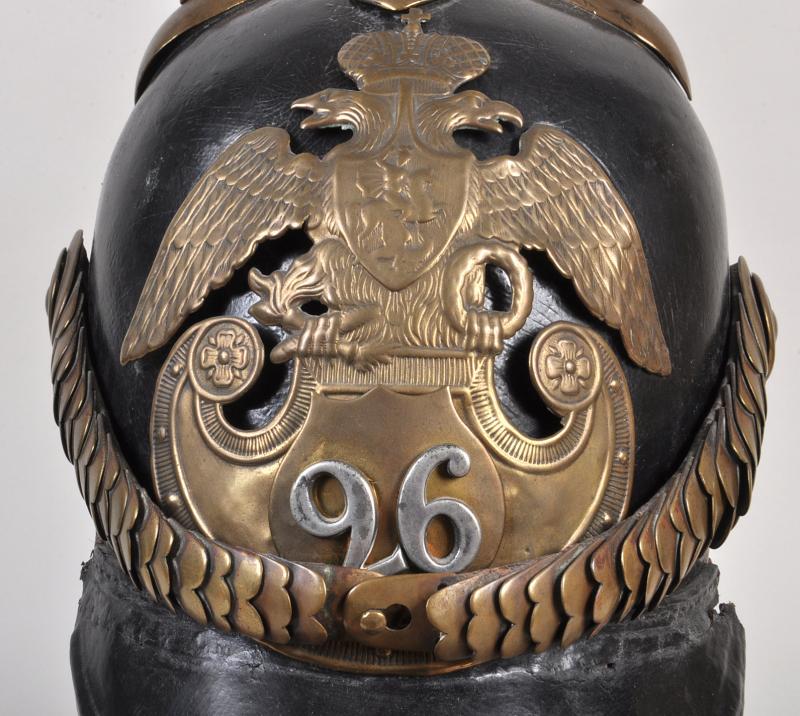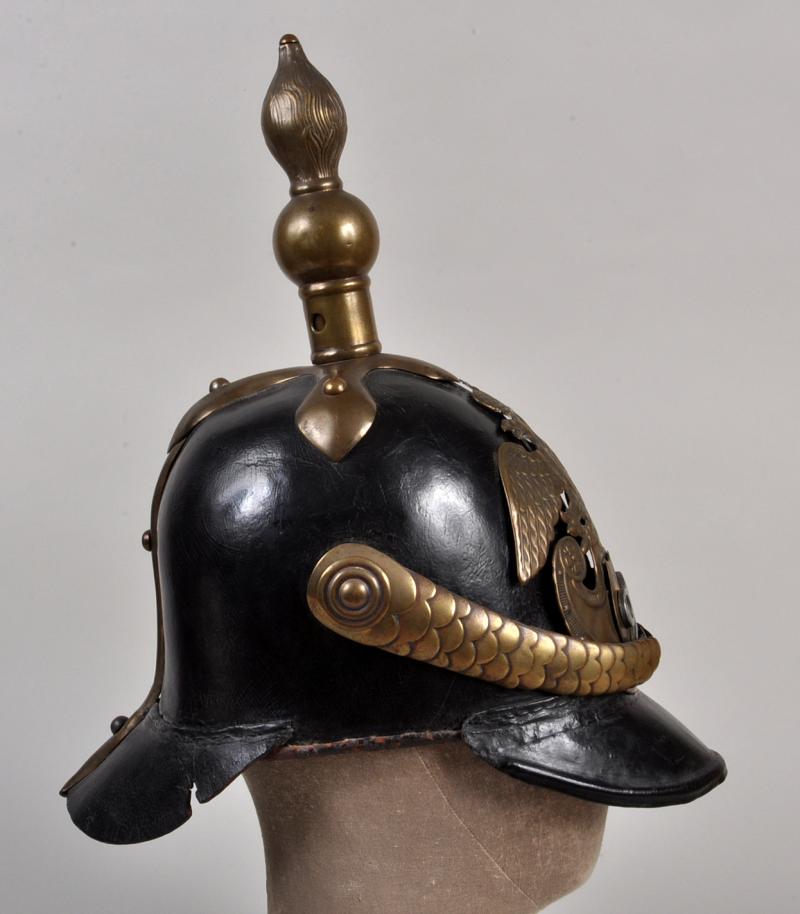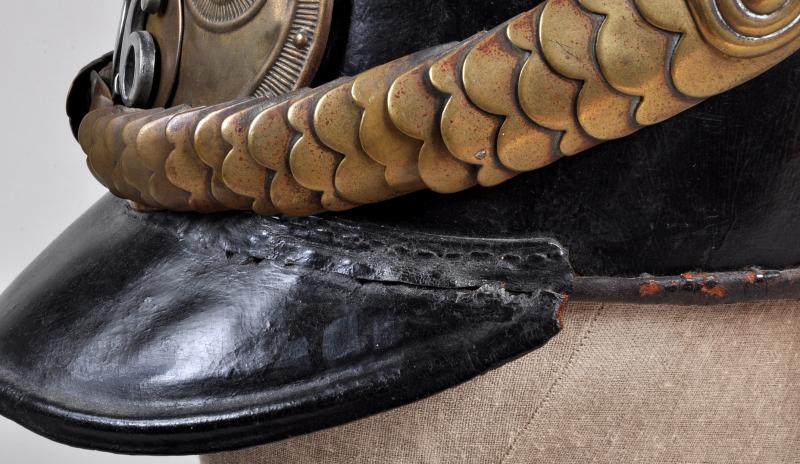IMPERIAL RUSSIAN MODEL 1849 INFANTRY HELMET.
A very fine example of the model 1849 Russian infantryman’s all leather helmet. The first country to introduce the leather helmet of this height and style was the German States and as fashion follows fashion especially with military uniforms the Russians soon followed and by 1844 had introduced the tall leather helmet. This example being the 1849 model having an excellent all leather skull, good and firm, some slight weakness to the right hand side of the peak where it joins the main body. The rear peak has strong stitching to the main body with what appears to be a small rodent gnaw out of the right hand side of the rear peak. All of its fittings match in brass with the regimental number ‘26’ fitted to a plaque to the lower part of the front plate with the Russian double headed eagle and the Order of St. George to the centre. To the interior the leather sweatband all complete with slight leather rot with its original canvas inner lining with what appears to be a pencil marking of an original wearer’s name to the inner skull, which still retains a lot of its light tan leather colour. It is amazing that a helmet of this age would still be in such good firm displayable condition. We believe that this helmet was sold by the auctioneers Christies and another interesting fact is that we have owned a number of these helmets over the years and as in most things patterns emerge and we recall that a lot of the helmets we have had have either been Regiment 26 or Regiment 36, it would seem that the British forces captured a great many of the helmets from these particular regiments, in fact studying the excellent work Crimean Memories, Artefacts of the Crimean War which is a Schiffer Military History publication, on pages 251 and 255 two examples at least of Regiment 26 helmet plates are shown. The writers of this excellent work comment ‘Helmet plates with the number 26 were quite common in military stores in Sevastopol, as the 13th Division formed a peacetime garrison there. When the city fell these stores became easily obtained trophies for the British and French troops. Comment courtesy of the Duke of Wellington’s Regimental Museum. The number 26 indicates the 26th Bialystok Infantry Regiment or the 26th Lithuanian Jager Regiment.’ An historic piece of headdress.
Code: 79595
2500.00 GBP

